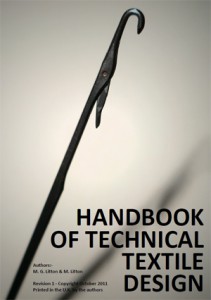
Modern advertising techniques use many ways to convey a message to the consumers. Print media, however, is one of the oldest forms of advertising. It also remains to be one of the most popular forms because it can reach a wider target audience. There are various types of print media which help advertisers to target a particular segment of consumers.
Starting from woodblock printing in 200 CE to digital printing that is currently in use, printing has definitely come a long way. It is a process of using ink on paper to show us images and text by using a printing press. The primary use of print media is to spread information about daily events and news as it is the fastest way to reach the public. Apart from that, it provides a lot of entertainment to the readers. It may be magazines or newspapers that cover all the stories and articles that generate a lot of interest in the minds of the public. Another important use is that of advertisements, as print media is quite inexpensive and can target a huge population at once.
Newspapers are the most popular form of print media. They are generally delivered at home, or are available at newsstands, and it is the most inexpensive way to reach a huge mass of people quickly.
Different types of newspapers cater to various audiences, and one can select the particular category accordingly.
A newspaper is divided into various segments containing current events, sports, food, entertainment, fashion, finances, politics, advertisements, informative articles, and so on. The advertiser, in this case, can choose from a daily newspaper to a weekly tabloid. Advertisers design press advertisements, wherein the size is decided as per the budget of the client.
A newsletter is a publication that mostly covers one main topic. Sometimes, people have to subscribe for the newsletters, or many a time, they are even free. Newsletters are generally used as information sources for neighborhood, communities, and groups having an interest about that particular topic, or event. They are also used for promotional purpose, political campaigns, or for causes.
Newsletters are also used in many schools as a communication tool for parents, which give them information about what is new in the school. Many companies make use of newsletters as a marketing strategy to provide all the information to customers and employees.
Magazines provide detailed articles on various topics, like food, fashion, sports, finance, lifestyle, and so on. Magazines are published weekly, monthly, quarterly, or annually, and many of them are sold all over the world.
Advertising in magazines costs a bit more, but it is a great way to target some market segments. The ads in the magazines need to be eye-catching, yet simple and elegant. Make sure you do not put too much information to herd the page; in that case, you can provide web details for more information. The advertisements and magazine subscription fees are the fund providers for the magazines.
Banners at many places are made of cloth, or paper and are used to show slogans, logos, or some messages. It is also used for advertising brands in exhibitions, giving out the names of products, or services that are being provided. Like banners, posters also come under the same category for the same purpose.
Communication details are also an important part of these banners. Posters are mostly hung at a height and are made attractive so as to catch the attention of the passersby. The primary use of posters can be seen in political campaigns. Both banners and posters are customized and include text as well as graphics―that too in a huge size so that the message is seen from far. It is a self-made form of advertising.
Billboards have mostly become digital, but they qualify under the category of print media―after all, the advertisements are printed on the billboard. These include text and graphics―mostly as a combination―so as to make it more appealing.
Billboards have fixed locations and are huge in size so that it can be seen and read from a long distance. Billboard advertisements are the most costliest in the print media category. The price depends on the size, location of the billboard, and mostly on the duration of the advertisement. Apart from advertisements, a lot of promotional activities are also done by making use of billboards. Even though it costs a lot, it helps in targeting all the market segments.
Books are the oldest form of print media that are used as a way of communication and information piece. They give an opportunity to writers to spread their knowledge about a particular subject to the whole world. They are a diverse platform comprising varied topics that include literature, history, fiction stories, and many more, that not only increase our knowledge but also entertain us.
A book is actually a collection of many printed pages, which are later bound together. After printing was invented, books were printed giving knowledge of various sectors to the world.
A brochure, also known as pamphlet, is a kind of booklet that contains the details of the company, or organization. Generally, brochures are for takeaway, so as to keep the brand in the mind of the audience.
They are distributed in exhibitions, or shops in which particulars of the product, or service of the company are provided along with communication details. It is very necessary that the brochure contains all the required details of the product or service with terms and conditions along with the charges. Brochures generally consist of two or three folds of glossy and colorful sheets with some nice presentation. They are mostly distributed by hand, sent by mails, or you may find them at brochure racks as well.
A normal flyer is also a part of print media. Some of the big companies may not use this type for advertising of targeting the market, but for small organizations, it can be very useful and can help in generating business. A flyer should always be crisp and eye-catching so that it attracts people’s attention.
Flyers can be distributed in exhibitions, or can be put on walls of colleges and schools, depending on what kind of audience an organization is looking for. Printing of flyers is also inexpensive, and so, a stack can be distributed in the neighborhood, or at signals. They are commonly used for advertisements, or at local events and parties.
This article comes form buzzle edit released


